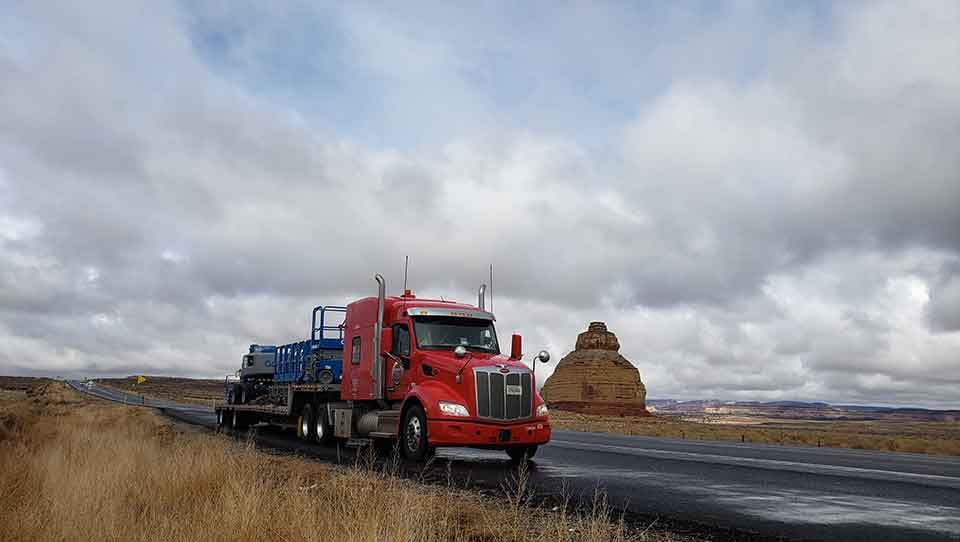Freight shipping is a complex operation with a lot of variables. Basically, you are trusting some of your valuable assets to a carrier to load, transport and unload them at your final destination.
With so much riding on your shipments (financial assets, your supply chain and timelines, and even your reputation), there’s a lot to get right. And you can’t afford to make mistakes.
With 68 years under our belts, Anderson Trucking Service (ATS) has worked with shippers at all levels of experience. Safely transporting your assets is our business, and we want to help you have successful shipments — no matter who you choose as your provider. We’ve compiled a list of common mistakes shippers make, as well as how you can avoid them.
This article will define three common mistakes shippers make, and explain common solutions for each. At the end, you will be prepared to avoid these mistakes.
Mistake 1: Always Choosing the Cheapest Freight Shipping Option
Make no mistake, there’s nothing wrong with saving money. And sometimes the best option is the least-expensive option.
Cheap freight can end up costing far more in the long run. Before taking the cheapest quote, especially with a new broker or carrier, make sure you can rely on the provider to be there when you need them.

Sometimes carriers and brokers with a lower upfront price will make up that money with add-on charges. Verify what is included in the price quote — if there will be any charge for services not included in the quote, make sure to budget for those services.
Time is money in trucking. If your carrier is unreliable, that can also end up costing you big.
For example: saving $50 on a shipment will not result in overall savings if the truck is late and the consignee ends up paying their staff $200 in overtime to unload.
Rather than always choosing the cheapest option, be sure to factor in the quality of the provider. This is an ideal application for your common sense: in transportation as in life, if a deal seems too good to be true, it probably is.
Mistake 2: Not Providing a Complete Freight Specification
The best way to work with a shipping provider is to provide complete and accurate information from your first contact. Your broker or carrier will need to know:
- What is shipping? Your carrier needs to know what is in the shipment in order to source a truck. Precision matters here: note if the shipment contains any hazardous materials, how it is packaged and if it requires any special handling (temperature control, non-stackable, etc.).
Helping your carrier understand what they will be carrying means they will show up prepared with the right equipment. For example, your freight might need additional straps for securement, tarps or a specialty truck.
The driver and carrier determine what equipment is needed based on what is shipping. If a driver arrives with the wrong equipment, that will mean delays and additional fees. - Length, height, width and weight. Every type of truck must stay under legal load limits to travel without a permit. Oversize freight requires a permit in each jurisdiction it will travel through; failing to get those permits ahead of time will result in significant delays and added costs.
Exact dimensions matter when it comes to shipping. Measurements that are off by just a few inches can mean the difference between an uneventful trip and a potential disaster. - Delivery dates. Specify the date your freight needs to be picked up and delivered. The driver’s Hours of Service (HOS) will mandate how quickly the freight can travel. Your provider will use that information to determine if those dates are realistic, or they will include updated information in your rate quote.
Savvy shippers also know that if you can be flexible with dates, that’s a good way to secure a better price. If there is a window of a few days in which your freight can be moved, that makes it easier for a carrier to use your load to move a driver closer to home or add your load to part of another trip.
- Pickup and delivery addresses. Knowing where the freight starts and ends will allow the carrier to determine how long the route will be and then determine the best route.
In some cases, the best route is the most direct road between point A and point B. Sometimes, especially with oversize freight, a different route can save time, hassle and ultimately money. A trustworthy carrier or broker will convey this information to you pre-trip. - Additional requirements for the driver. If the driver needs a specific type of protective equipment or certification, specify that at the beginning. If a driver arrives onsite to find they need a specific piece of equipment, or if another driver with a specific certification is required, that will lead to additional fees and delays.
Providing this information at the beginning of the process is the best option. Of course, things always change in the transportation industry. If one or more of these variables changes before your delivery begins, let your point of contact know as soon as possible.
If this is your first time working with a carrier, or if you aren’t sure how to describe your shipment, pictures are a great solution. If you can take a picture of what your freight looks like, what the scale reads or a tape measure next to your freight, that will eliminate any confusion immediately.
Mistake 3: Not Vetting New Carriers and Brokers
Before handing over your freight to a new carrier or broker, make sure you know who is hauling your assets. While there are plenty of reliable new brokers and carriers on the market, some new providers are a front for a cargo theft scheme.
Even legacy carriers need to be vetted by your company. Not everyone will be the best fit for your business. If you regularly ship short haul loads, you can benefit from a carrier who specializes in that. If most of your freight is heavy haul, you need a carrier who has the right equipment.
Vetting a new carrier can take some time at the beginning, but it is worth it to keep your freight safe and build a long relationship. ATS offers a freight carrier selection checklist to help you compare carriers, or you can set your own key performance indicators (KPIs). Examples of KPIs may include:
- Average age of fleet
- Years in business
- On-time rate
- Price
- Availability of needed trucks
You are likely to need more than one carrier or broker in your arsenal. Just like you interview job candidates before you bring them on board, ask questions to get to know new carriers before you hire them.
Avoid These 3 Mistakes to Ship Like a Pro
Taking the time to carefully prep and plan for your shipment can save you significant time, money, hassle and (potentially) from disaster.
The important thing is to remember some principle guidelines in the transportation industry:
- Choose a broker or carrier based on their suitability for your shipment, not just the lowest price.
- Carefully create an accurate and thorough shipment quote request as soon as possible.
- Vet new providers thoroughly based on your individual needs.
No matter how often you create shipments, or how long you’ve been doing it, there’s always more to learn. To become an expert in shipping, subscribe to our Learning Hub to receive convenient updates right to your inbox.




